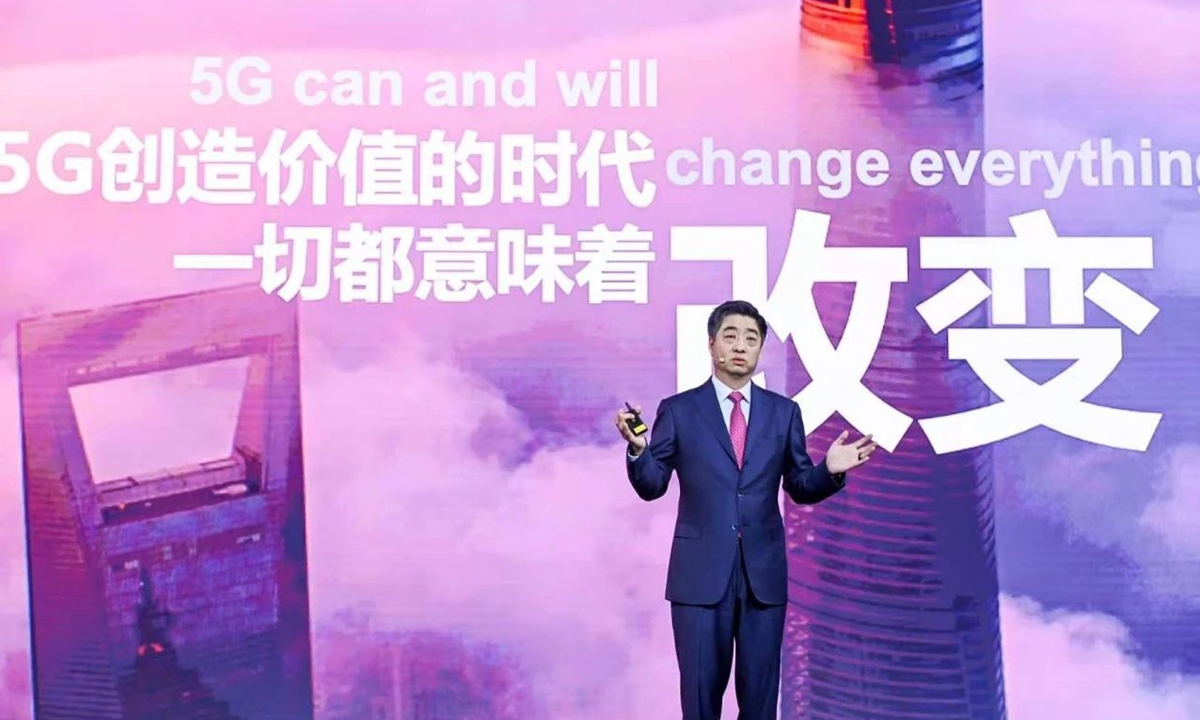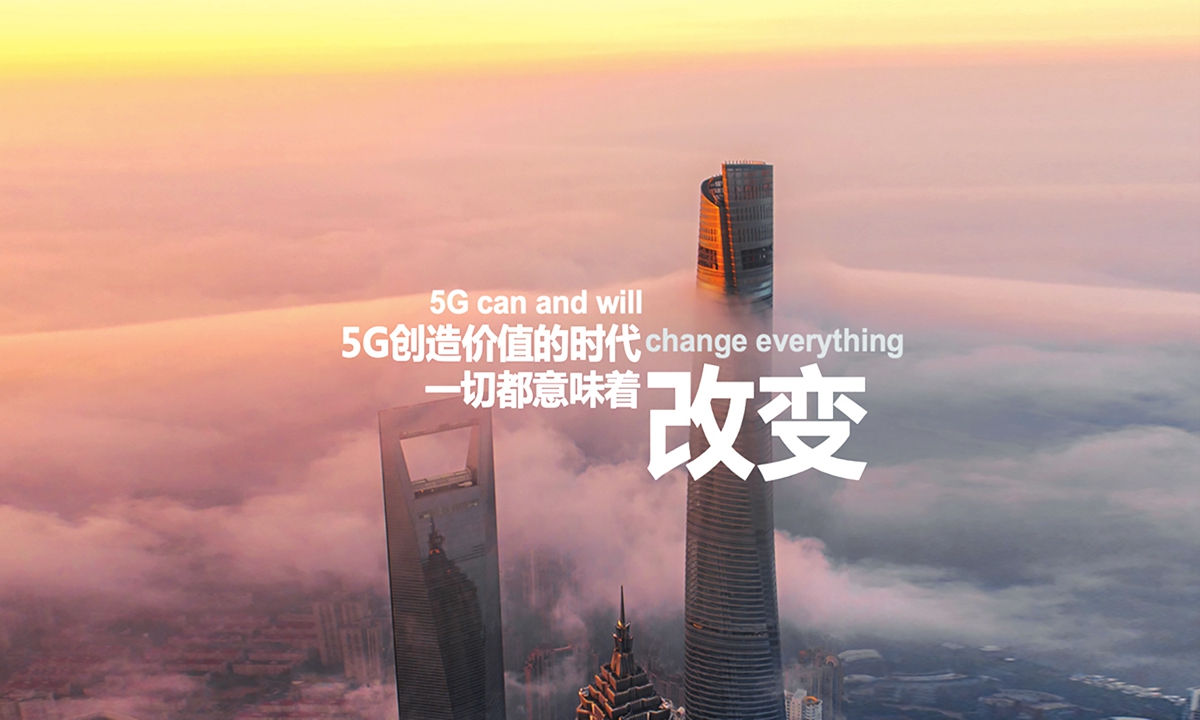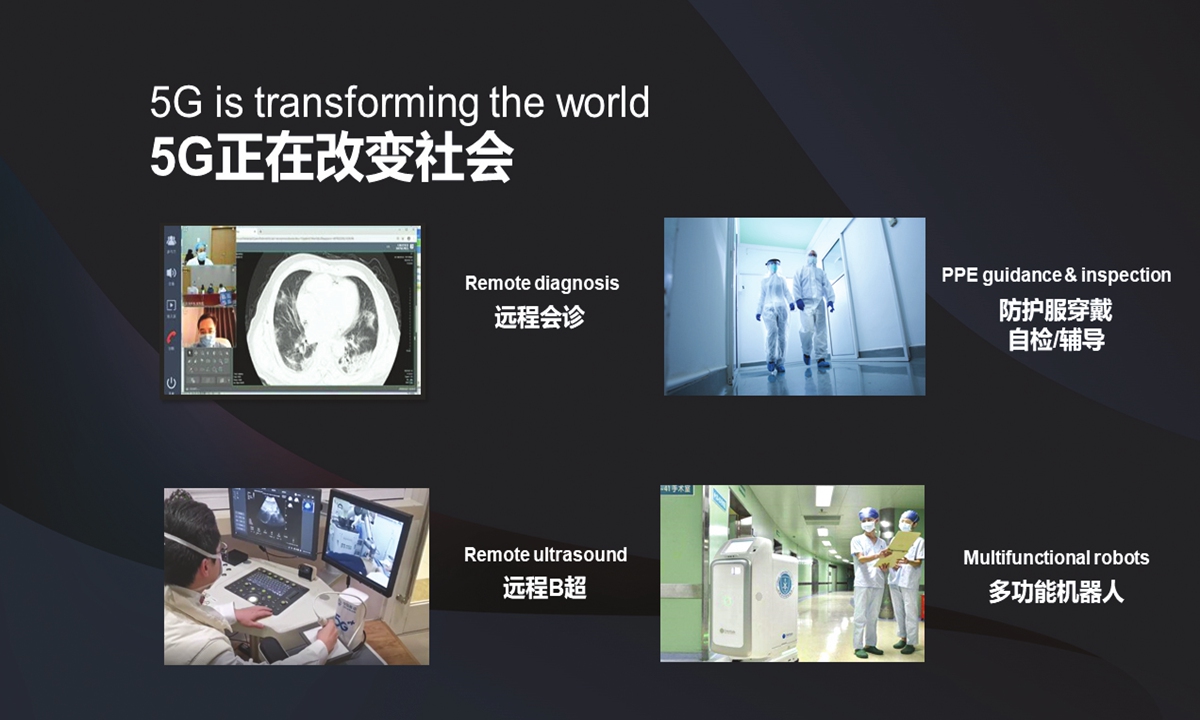Crossing the commercial rift and creating new 5G value together: Huawei vice chairman
By Source: Global Times Published: 2020/11/15 18:37:10

Hu Houkun, vice chairman of Huawei Technologies Co, delivers a speech at the 2020 Huawei Global Mobile Broadband Forum in East China's Shanghai Municipality on Thursday. Photo: Courtesy of Huawei
At the 2020 Huawei Global Mobile Broadband Forum in East China's Shanghai Municipality on Thursday, Hu Houkun, vice chairman of Huawei Technologies Co, delivered a speech under on the topic of "crossing the commercial rift and creating new 5G value together."At this year's two-day forum, officials from 5G leader Huawei joined hands with representatives of global operators, regulatory agencies, partners, analysts and other ICT industry elites to share their thoughts on global industry trends and hot topics, including the development of 5G, AI and ICT technologies.
"Society's expectations for 5G have never been only about consumption. What the public expects is that 5G can change society and create more new value for society. Such changes are happening in all walks of life," Hu said.
To accelerate the innovative application of 5G in the industry, the Huawei executive noted that "innovation often does not have any established guides to follow. We have to explore scenario-based needs, temper our capabilities by meeting demands, rely on the capabilities to improve positioning. This is both a challenge and a greater opportunity for each participant."

Presentation pages of Huawei vice chairman Hu Houkun's speech Photos: Courtesy of Huawei
Faster but cheaper 5GThis is the second time the Huawei Global Mobile Broadband Forum has been held in Shanghai. The last time was in 2014, when China had just started 4G construction. This year, 5G networks have been widely deployed in China, and services have begun to be put into full use.
During the forum, Hu said that the 5G network rollout has entered the fast lane now, and China is leading the game.
China currently has the best 5G network in the world, experts say. In Shanghai, for example, a consumer can experience a download speed of more than 1,000 megabytes a second, which is 10-20 times than 4G.
Major Chinese operators have rolled out more than 600,000 5G base stations in China, forming networks covering more than 300 cities. In just over a year, China's 5G network is now available to more than 160 million people.
From medical care to ports, from steel to power grids, from mining to manufacturing, 5G has been applied to more than 20 industries in China, Hu added.
As of September, Huawei 5G has been applied to more than 5,000 innovative projects of China's three leading operators in more than 20 industries, and it has more than 1,000 commercial contracts, according to Hu.
During the coronavirus outbreak in Central China's Wuhan this year, it took Huawei and the operator only 72 hours to build the 5G network to cover the whole Huoshenshan and Leishenshan hospitals. With a 5G connection, remote consultation, remote B-ultrasound, and multifunctional medical robots were applied, providing support for the prevention and control of the epidemic.
In addition to 5G network construction, the development of 5G industry applications, terminals are a problem that can't be ignored and can't become a bottleneck. To solve the problem of the prosperity of the terminal ecology, on the one hand, it is necessary to increase the types of modules, and on the other hand, to reduce the price of modules.
During this year's Double 11 shopping festival, China Mobile provided the market with a 5G handset costing only 799 yuan ($121), which is called a "positive signal" by Hu. Hu predicted that the price of 5G modules will continue to drop in the future.
Hu expects that the price of 5G modules will drop to $100 by the end of this year and to $40 by 2022. Lower terminal costs in the 5G industry will benefit the popularization of 5G.

Photos: Courtesy of Huawei
5G in more scenarios
The Huawei executive expressed great confidence in the 5G technology's application prospects in various of industries. "There is no ready path for us, because the needs of different industries vary greatly," Hu noted.
Hu noted that 5G companies need to explore application scenarios-based rigid demands, adding that Huawei has raised four standards to identify these demands - technical relevance, commercial potential, industrial chain maturity and standardization degree of enterprises - on which Huawei has identified some typical scenarios, including remote control, video transmission, machine vision, personnel and equipment positioning.
Huawei 5G has already played a role in the transformation of gantry cranes in Ningbo Wisdom Port. Now the gantry cranes are fully operated remotely, helping its efficiency increase by 20 percent and reduce labor costs by 50 percent.
The port industry already has mature corporate standards. At the end of this year, the smart port communications corporate standard will be formulated by Huawei and its customers and partners. With the guarantee of standards, 5G technology will be used and promoted in other ports, Hu said.
Hu said that 5G networks need to adapt to various of application scenarios. Networks' equipment and capabilities need to match the diversified needs of the industry, which requires manufacturers and operators to go deep into the industry and carry out continuous innovation.
Hu noted that 5G technology has been increasingly combined with the digital transformation needs of enterprises in various industries. This requires new capabilities, including the ability to provide connectivity, cloud operation capabilities, industry application development capabilities, and end-to-end integration capabilities.
Hu concluded that the next ten years will be a great era and a golden opportunity. However, the development of 5G will have great challenges and require bold thinking and active actions.
Newspaper headline: Huawei 5G outlook
Posted in: PRESS RELEASE